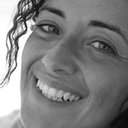Potassium bromate but not X-rays cause unexpectedly elevated levels of DNA breakage similar to those induced by ultraviolet light in Cockayne syndrome (CS-B) fibroblasts.
Słowa kluczowe
Abstrakcyjny
It has been previously reported that the elevated accumulation of repair incision intermediates in cells from patients with combined characteristics of xeroderma pigmentosum complementation group D (XP-D) and Cockayne syndrome (CS) XP-D/CS fibroblasts following UV irradiation is caused by an "uncontrolled" incision of undamaged genomic DNA induced by UV-DNA-lesions which apparently are not removed. This could be an explanation for the extreme sensitivity of these cells to UV light. In the present study, we confirm the immediate DNA breakage following UV irradiation also for CS group B (CS-B) fibroblasts by DNA migration in the "comet assay" and extend these findings to other lesions such as 8-oxodeoxyguanosine (8-oxodG), selectively induced by KBrO3 treatment. In contrast, X-ray exposure does not induce differential DNA breakage. This indicates that additional lesions other than the UV-induced photoproducts (cyclobutane pyrimidine dimers, CPD, and 6-pyrimidine-4-pyrimidone products, 6-4 PP), such as 8-oxodG, specifically induced by KBrO3, are likely to trigger "uncontrolled" DNA breakage in the undamaged genomic DNA in the CS-B fibroblasts, thus accounting for some of the clinical features of these patients.


